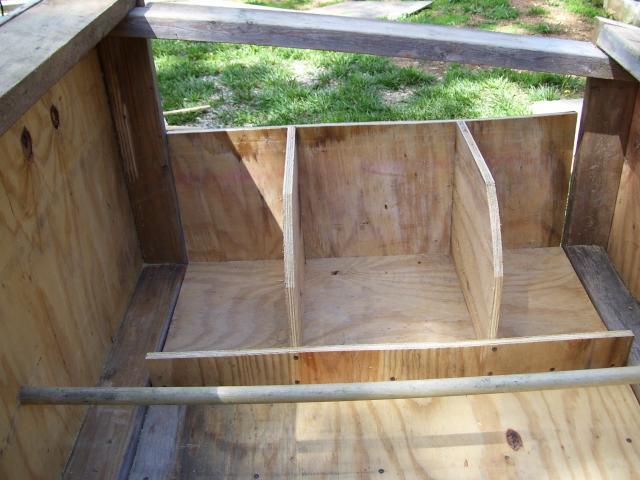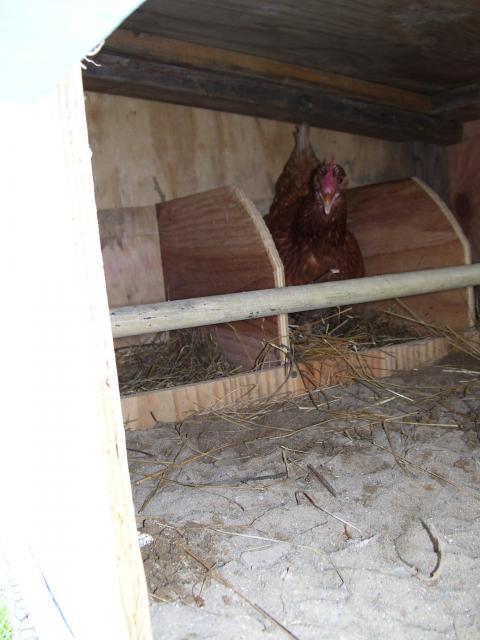Aha, now I have another suggestion. The rule of thumb given on here is one nest to four hens. However, if I had five I wouldn't even consider building more than one. Many, many people say they all use one or a very few nests, even if they have 15 or 20 hens. I have 7 laying at present and they use one -- and it isn't even a nest box, it is a hole someone wallowed out in some loose hay. You should be able to increase their coop floor space quite a bit by taking out two of your nest boxes.
You could also enclose 2 or 3 sides of the area below the coop, even with something temporary like a piece of an old tarp. If they're staying in due to snow, or go in during the day for any reason, this would give them some more "awake and inside" space, and give the "peckee" somewhere else to go.
And yes, I'd guess that cabin fever has gotten to them, along with a whole lot of other flocks. It's a real pain to forage and find no bugs and no grass, just that awful white stuff, don't you know....
You could also enclose 2 or 3 sides of the area below the coop, even with something temporary like a piece of an old tarp. If they're staying in due to snow, or go in during the day for any reason, this would give them some more "awake and inside" space, and give the "peckee" somewhere else to go.
And yes, I'd guess that cabin fever has gotten to them, along with a whole lot of other flocks. It's a real pain to forage and find no bugs and no grass, just that awful white stuff, don't you know....
Last edited by a moderator:









